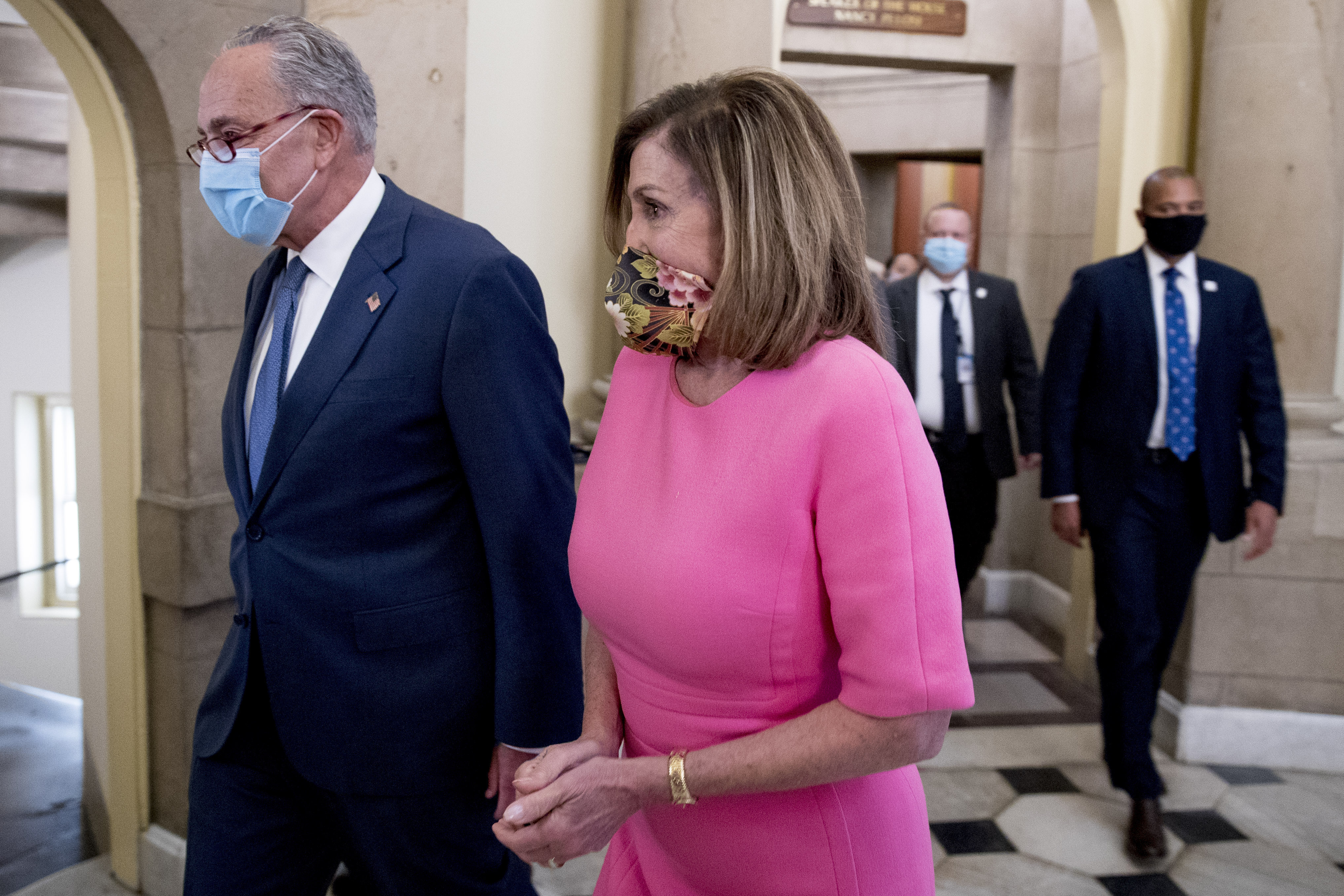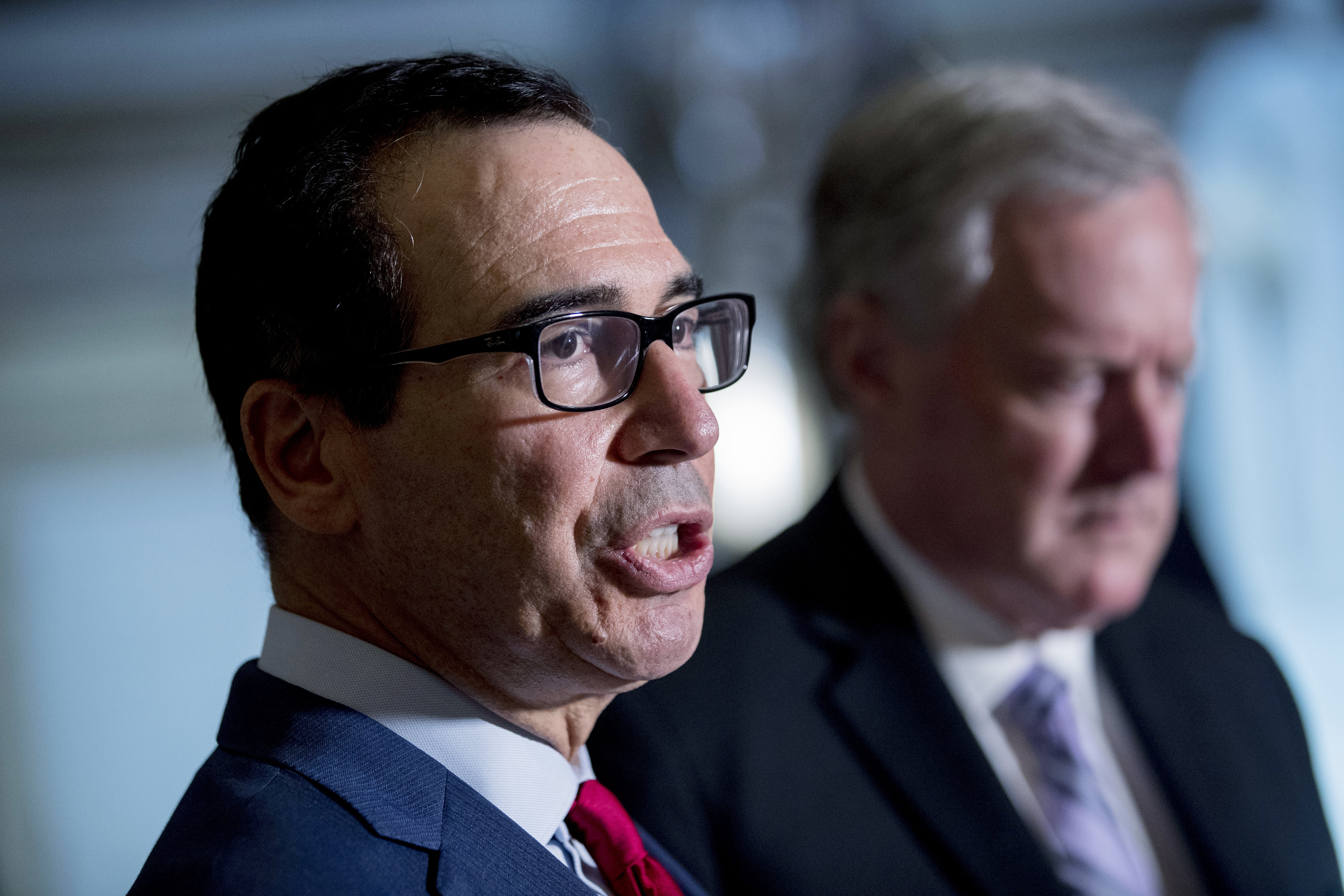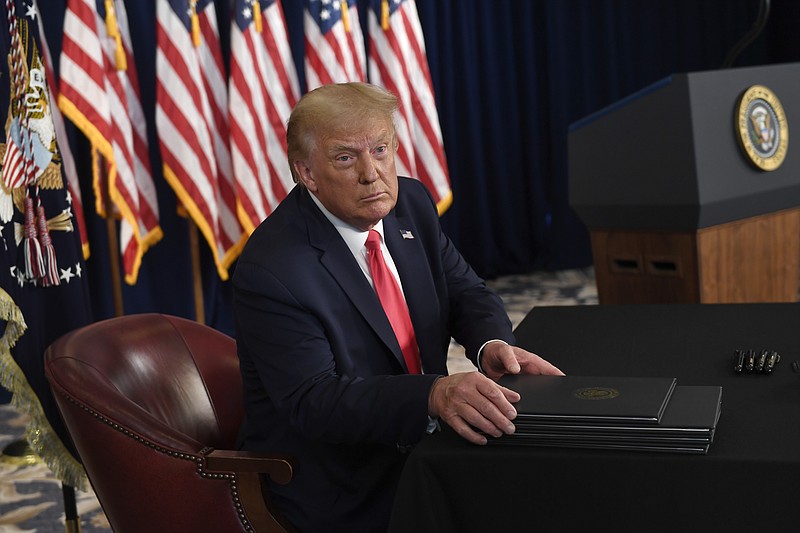President Donald Trump's end run around Congress on coronavirus relief is raising questions about whether it would give Americans the economic lifeline he claims and appears certain to face legal challenges. Democrats called it a pre-election ploy that would burden cash-strapped states.
"When you look at those executive orders ... the kindest thing I could say is he doesn't know what he's talking about or something's wrong there," House Speaker Nancy Pelosi said.
After negotiations with lawmakers on the next package of pandemic economic assistance hit a wall, Trump used what he said were the inherent powers of the presidency to forge ahead on tax and spending policy that Congress says it is granted by the Constitution.
Trump asserted he had the authority to defer payroll taxes and extend an expired unemployment benefit, although at a lower amount than what the jobless had been getting during the crisis. With Congress deadlocked on extending supplemental federal jobless benefits, Trump signed an executive order Saturday to restore $400 of the $600 weekly supplement for unemployed persons, provided that $100 of the extra money each week for every unemployed person comes from state coffers.
Tennessee, like most states, said it is still studying the proposal. Last week, Tennessee paid jobless benefits to 248,545 unemployed persons and to sustain the supplemental benefits under Trump's proposal would cost the state an extra $24.8 million every week.
Tennessee has used other federal funds for he past couple of months to pay its state share of unemployment benefits, which pay a maximum of $275 a week for jobless persons up to six months. The federal supplement was paying another $600 a week to jobless persons, but that extra payment ended last month.
 Senate Minority Leader Sen. Chuck Schumer of N.Y., left, and House Speaker Nancy Pelosi of Calif., right, walk out of a meeting with Treasury Secretary Steven Mnuchin and White House Chief of Staff Mark Meadows as they continue to negotiate a coronavirus relief package on Capitol Hill in Washington, Friday, Aug. 7, 2020. (AP Photo/Andrew Harnik)
Senate Minority Leader Sen. Chuck Schumer of N.Y., left, and House Speaker Nancy Pelosi of Calif., right, walk out of a meeting with Treasury Secretary Steven Mnuchin and White House Chief of Staff Mark Meadows as they continue to negotiate a coronavirus relief package on Capitol Hill in Washington, Friday, Aug. 7, 2020. (AP Photo/Andrew Harnik)"The Department is also awaiting guidance from the U.S.Department of Labor concerning the rules and conditions of implementation of the program outlined in the Executive Order," said Chris Cannon, assistant commissioner for the Tennessee Department of Labor and Workforce Development.
Rebecca Dixon, executive director of the National Employment Law Project (NELP), said Trump's executive order said the supplemental benefits must be paid "in conjunction with the state's unemployment insurance system" which means that states will have to set up a new way to add these payments to existing benefits.
"Setting up a new system entirely will be difficult, if not impossible," she said.
As state officials questioned whether they could afford $100 per person per week, Trump offered a new angle to the plan. Speaking to reporters Sunday night as he returned to Washington, he said states could make application to have the federal government provide all or part of the $400 payments. He said decisions would be made on a state-by-state basis.
Trump said earlier that the federal contribution would be redirected from disaster relief money at the Federal Emergency Management Agency - dollars not likely to last more than two months.
Treasury Secretary Steven Mnuchin said the $100 share from states would come from from an earlier pool of federal money and that Trump may waive the requirement about how it can be used.
 Treasury Secretary Steven Mnuchin, left, accompanied by White House Chief of Staff Mark Meadows, right, speak to reporters following a meeting with House Speaker Nancy Pelosi of Calif. and Senate Minority Leader Sen. Chuck Schumer of N.Y. as they continue to negotiate a coronavirus relief package on Capitol Hill in Washington, Friday, Aug. 7, 2020. (AP Photo/Andrew Harnik)
Treasury Secretary Steven Mnuchin, left, accompanied by White House Chief of Staff Mark Meadows, right, speak to reporters following a meeting with House Speaker Nancy Pelosi of Calif. and Senate Minority Leader Sen. Chuck Schumer of N.Y. as they continue to negotiate a coronavirus relief package on Capitol Hill in Washington, Friday, Aug. 7, 2020. (AP Photo/Andrew Harnik)Though certain to further strain relations with Congress, the move to provide more jobless benefits and to suspend payroll taxes were framed by the White House as the president breaking through the Washington gridlock in order to directly distribute aid. Advisers hope it will sustain an economic recovery that Trump likely needs to defeat Democrat Joe Biden in November.
Democrats initially sought a $3.4 trillion package, but said they lowered their demand to $2 trillion. Republicans had proposed a $1 trillion plan.
Trump also acted to defer payment of the payroll tax, a long-pushed goal that had little support from either party on Capitol Hill, and federal student loans. His order on housing is not a guarantee against eviction, as he claimed, but instead directs the departments of the Treasury and Housing and Urban Development to identify money that could help those struggling to pay their monthly rent.
Trump said the employee portion of the payroll tax would be deferred from Aug. 1 through the end of the year, and he raised the possibility of making it permanent, though experts said he lacked that authority. The temporary deferral would not directly aid unemployed workers, who do not pay the tax when they are jobless. Employees would need to repay the federal government eventually without an act of Congress.
The president was silent on Saturday on how he would fund Medicare and Social Security benefits that the 7% tax on employee income covers. Democrats seized on the possible threat to Social Security as a signal that Trump wanted to cut the social safety net.
In the wake of that criticism, Trump told reporters the money would not come from Social Security but from the Treasury if the government didn't require workers to repay the taxes. Again, that would require congressional action.
"If the Democrats want to challenge us in court and hold up unemployment benefits to those hardworking Americans who are out of a job because of COVID, they're going to have a lot of explaining to do," Mnuchin said.
Both the White House and congressional Democrats indicated they wanted to resume negotiations, but no talks were scheduled.
